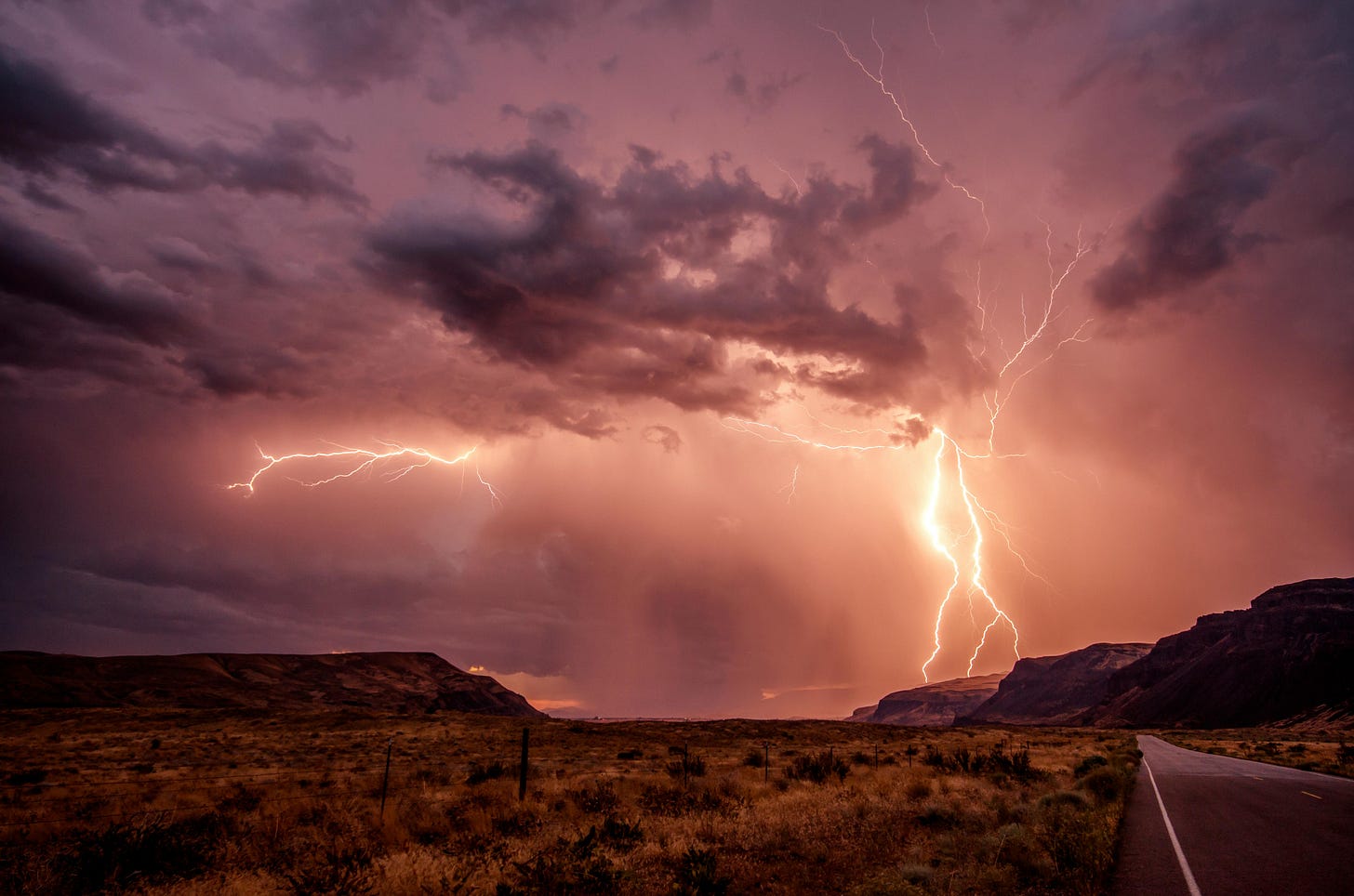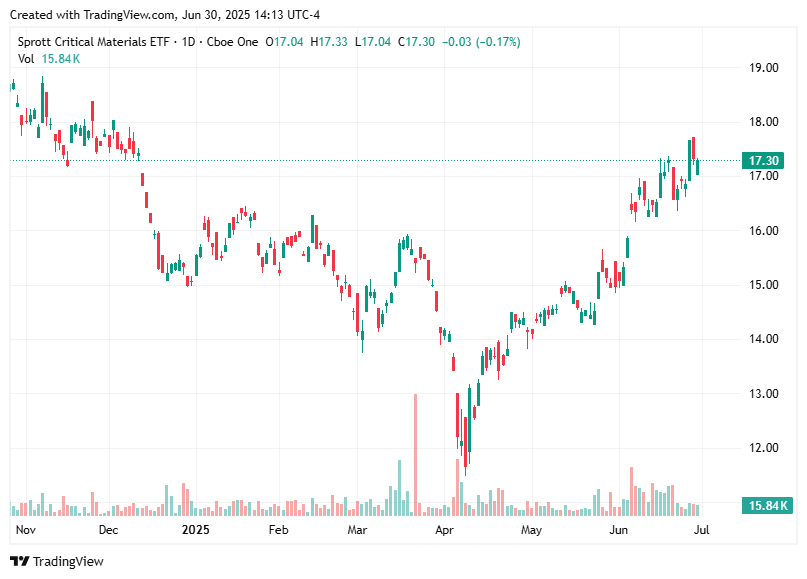The seven‑day roller‑coaster in six numbers
+15% YoY jump in copper prices, now orbiting $5.07/lb.
–90% Lithium carbonate collapse from 2023 peaks yet demand still +24 % last year.
$1.4 bn After-tax NPV on Ivanhoe Electric’s Santa Cruz PFS: the first U.S. copper mega-study of the cycle.
$120m EXIM’s tentative cheque for Greenland’s Tanbreez heavy‑rare‑earths behemoth.
125,000 acres Chevron’s brush‑stroke across the Smackover brine play.
79$/lb Uranium’s quiet climb, +9.8 % MoM, as the White House blesses new reactors.
Markets called it a “sideways” week.
Reality: Every supply chain assumption got body‑checked.
China kept the magnet spigot half‑closed, oil majors discovered their inner battery chemists, and copper continued its Marvel‑hero origin story.

Rare Earths: Magnets look for a new postcode
Europe’s offshore-wind giant Siemens Gamesa is courting three Chinese magnet makers (JL MAG, Ningbo Yunsheng, and Baotou Tianhe) to set up production inside the EU.
The COO says she is “happy to pay a premium for resilience” as export-license delays out of China stretch lead times from weeks to months.
Implications:
If even cost‑squeezed wind OEMs accept higher magnet prices for local supply, auto and defence buyers may follow. Defense is more sensitive to supply availability, while autos are often too sensitive to price.
Chinese firms gain a face‑saving off‑ramp: keep global market share while sidestepping Beijing’s tightening grip. Watch Brussels negotiate state‑aid rules to smooth the landing.
Additional developments:
Australia’s Donald project gets the green flag: Victoria approved Astron’s mine, set to be the world’s No. 4 REE pit by 2027, farmers livid, OEMs relieved.
Kazakhstan enters the gallium club: ERG will spend $20 m to ship 15 t/yr by 2026, instantly making it the world’s No. 2 producer.
If India hits volume targets, auto and defence buyers finally get non-Chinese magnet options. Donald adds heavy-rare-earth concentrate outside Asia just when Brussels mulls origin quotas. Gallium diversification is small in tonnes, but huge in semiconductors.
Copper: When zero really means shortage
Chile’s Antofagasta just inked a jaw-dropping treatment-charge deal with Chinese smelters: $0 /t, 0 ¢/lb. concentrate.
That’s not a typo, it is zero; feed is so scarce that smelters are begging.
Goldman Sachs bumped its 2H 2025 copper price target to $9 890/t, citing “structural tightness that even scrap can’t solve.”
Additional developments:
Santa Cruz puts U.S. copper back on the map: 72kt/yr cathode for 15 years, IRR 24% at spot, heap-leach, 70% renewable power.
Haulage goes electric: Railveyor’s autonomous light-rail system will cut Santa Cruz’s mine emissions 39%, opex 75%.
Smelters ship metal east: At least 30kt of Chinese cathode en route to LME sheds to cover shorts, risking domestic backwardation.
Zambia’s comeback tour: Debt reset, 6 % GDP target for 2025, kwacha firming; copper output revival underpins the macro.
Zero-TCRC plus Chinese exports means refined spreads stay violent. Projects with low-carbon logistics (Railveyor) win ESG premiums. Zambia’s macro tailwind is real, but watch power-grid capacity.
Lithium: China’s tonnage surge meets Texas tech swagger
Fastmarkets projects China will overtake Australia by 2026, courtesy of lepidolite tonnage, high cost, toxic waste, but politically irresistible.
Halliburton won the well-design contract for GeoFrame Energy’s DLE pilot in Texas, signaling oilfield-service muscle entering the brine game.
Chevron confirmed its 125,000-acre Smackover land grab will also use DLE, positioning the super-major as future mid-stream power.
DOE bankrolls Arkansas: Standard Lithium clinched a $225m grant for a 22,500tpa DLE plant, and Phase 2 doubles that.
Water rights trump speed: Nevada ordered Lithium Americas to stop illegal pumping at Thacker Pass after a rancher’s photo sting.
Batteries get a density turbo: Sion Power’s Licerion lithium-metal cell enters large-format pilot lines, doubling energy density and cutting pack cost by 15%.
DOE cash plus Big-Oil balance sheets slash financing risk on U.S. brine projects. Thacker Pass proves social license beats federal fast-tracks. High-energy lithium-metal cells could relax demand growth rates, but only if they scale.
Uranium: Development banks join the party
The World Bank and the IAEA signed a pact that lets multilateral lending flow into nuclear projects, explicitly including SMRs.
Spot uranium nudged to $79.05/lb on June 27, up 10% in a month.
MDB funding knocks 200-300 bp off SMR WACCs; expect a scramble for conversion and enrichment slots once term offtakes ink.
Critical Minerals Policy: Ottawa hits the accelerator
Canada’s Senate passed a bill granting Cabinet power to fast-track “national-interest” resource projects (mines and infrastructure alike) while launching a C$1.5 bn Critical Minerals Infrastructure Fund.

Things You Probably Missed (but shouldn’t)
Self-healing lithium-metal cathode. Li₁.₃Fe₁.₂Cl₄ keeps >90% capacity after 3,000 cycles by repairing its lattice mid-charge (goodbye composite cathodes, hello cap-ex savings).
Frack-water to battery feedstock. Rain City’s ACCELi pilot yanked 69% recovery lithium (94 % pure) from Marcellus brine, turning a disposal headache into a revenue stream.
Sodium-ion steps up. Korean researchers doped the electrolyte and hit 92.7% retention over 400 cycles, grid-scale storage has just found its cost contender.
Real-time dendrite cinema. UCLA’s eCryoEM “battery MRI” films lithium-metal anodes while they charge, promising to cut solid-state prototyping timelines in half.
AI servers love copper. Alloy Enterprises 3-D-prints forged copper cold plates that cool 120kW racks, and each hyperscale data hall quietly becomes a copper sink.
Takeaways & Forward-looking
Magnet incentives from Delhi to Donald reshape supply optionality, watch Malawi and Saskatchewan next.
Copper’s deficit story gains a U.S. ESG showcase (Santa Cruz) and a Zambian recovery kicker; $5.50/lb rallies stay on the table.
Mid-stream lithium subsidies + DOE grants = valuation rocket fuel; expect private equity raids on idle Arkansas and Alberta brines.
Uranium financing is institutionalizing; conversion capacity optionality just got priceless.
Policy watch next week:
EU Battery Passport trilogue: traceability could reorder supply chains overnight.
U.S. Section 301 tariff list update: copper and nickel rumours refuse to die.
Quad meeting (India-Australia-Japan-US): possible HREE processing hub in Visakhapatnam.
And finally, three questions smart capital should be asking
How do mid-stream subsidies change comparative project economics versus upstream greenfield mines?
Which OEM contracts embed price-adjustment clauses for rare-earth magnet, and who is still naked?
What is the optionality value of uranium conversion capacity in a world where data centers sign multi-decade PPAs?
Stay ahead with the Critical Minerals Journal — where insight meets impact.




